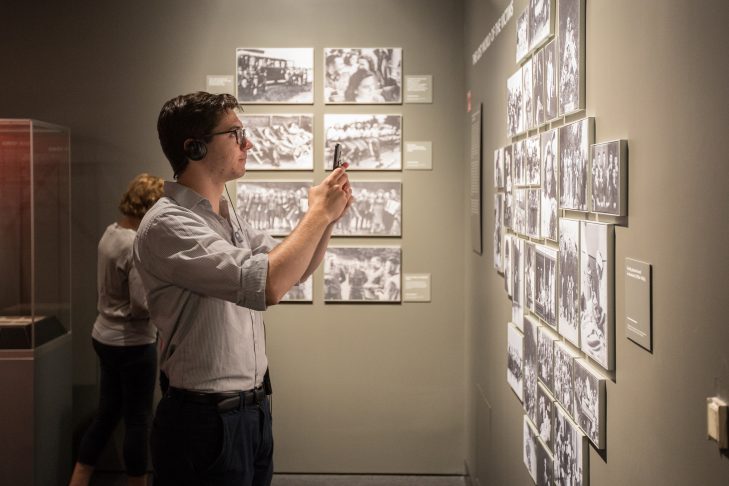In some ways, visiting a museum exhibition on Auschwitz-Birkenau can be more chilling than visiting the site itself. Under an open sky in Poland, surrounded by tourists with selfie sticks, it is at times difficult to imagine the evil that occurred in the same location only two generations ago. In a somber museum filled with hushed visitors and harsh spotlights, the material artifacts of the concentration camps and the photographs of those events seem to take on a greater significance and immediacy when they are staged in an exhibition. This may be simply a fault in my own imagination, however; I believe that I stand on solid ground in asserting that many visitors would prefer the design, narrative and execution of the Auschwitz exhibit at the Museum of Jewish Heritage in New York to the Auschwitz-Birkenau State Museum in Poland.
The passage of years and the changing of sensibilities over time have exposed a clumsiness in the Polish museum’s noble but flawed attempt to memorialize the horrors that took place there. A brief list of well-known issues with the Auschwitz-Birkenau State Museum includes the controversial decision to display human remains such as ashes and hair, a failure to acknowledge the extent to which the Holocaust was a project designed specifically to target Jews, a dearth of historical background, lack of humanization of the victims and paucity of survivors’ testimony. While these concerns, among others, may not be apparent to casual visitors of the Auschwitz-Birkenau State Museum, they are more commonly discussed in academic and professional circles.
Related
The Museum of Jewish Heritage’s exhibition also avoids the oversimplifications and facile tropes that often recur in discussions of the Holocaust. There is no glorification of American heroism in the face of fascist tyranny, self-righteous Zionist vindication in hindsight, obscuring of the specifically anti-Semitic designs of the Nazis or other editorializations that sometimes mar the historical integrity of discussions of the Holocaust. All this deserves praise and recognition; it goes without saying that the exhibition merits a visit before it leaves New York in January.
In addition to the perennial duty to remember the victims of genocide and the atrocities that cut short their lives, “Auschwitz. Not Long Ago. Not Far Away” is a timely reminder of the depravity and moral cowardice of human beings. During a moment in which the evils of white supremacy have once again become all-too-apparent, it is imperative that we educate ourselves about the history of bigotry, hate, violence and genocide. As citizens in a country whose liberal democratic values continue to be challenged, people of goodwill have a duty to remind ourselves of humanity’s dark past.
Michael Meagher is a student at Boston University.
Originally published here.




